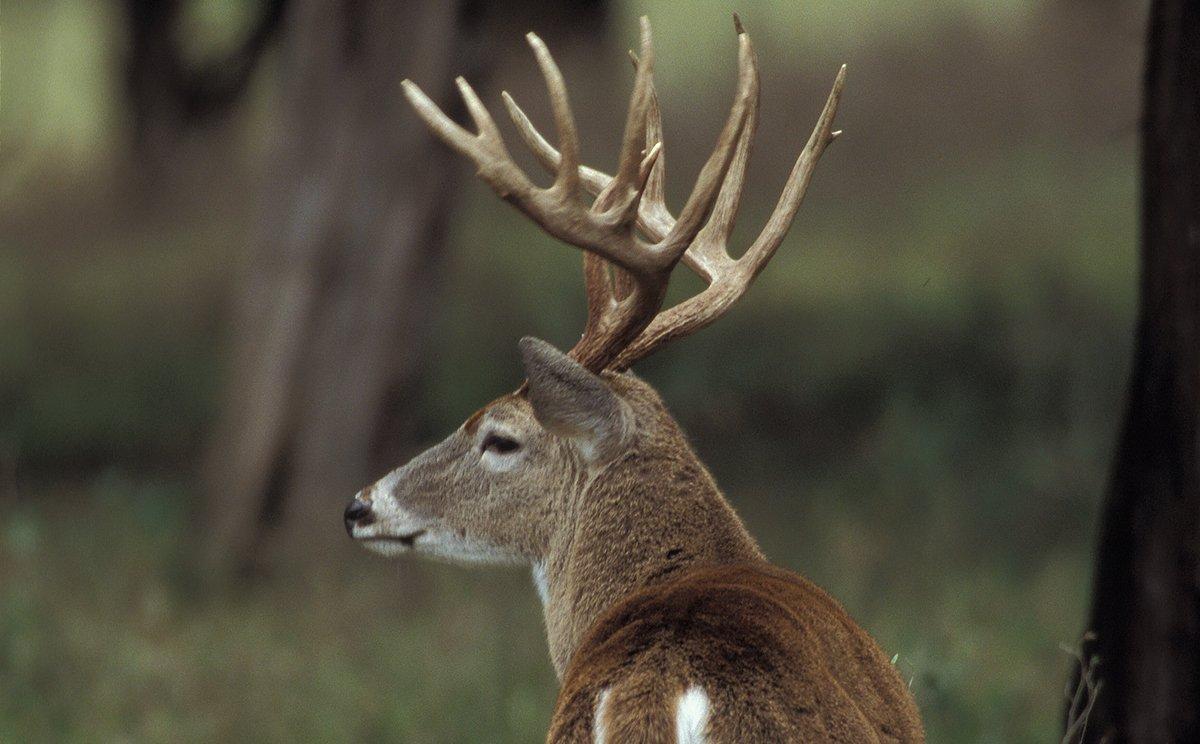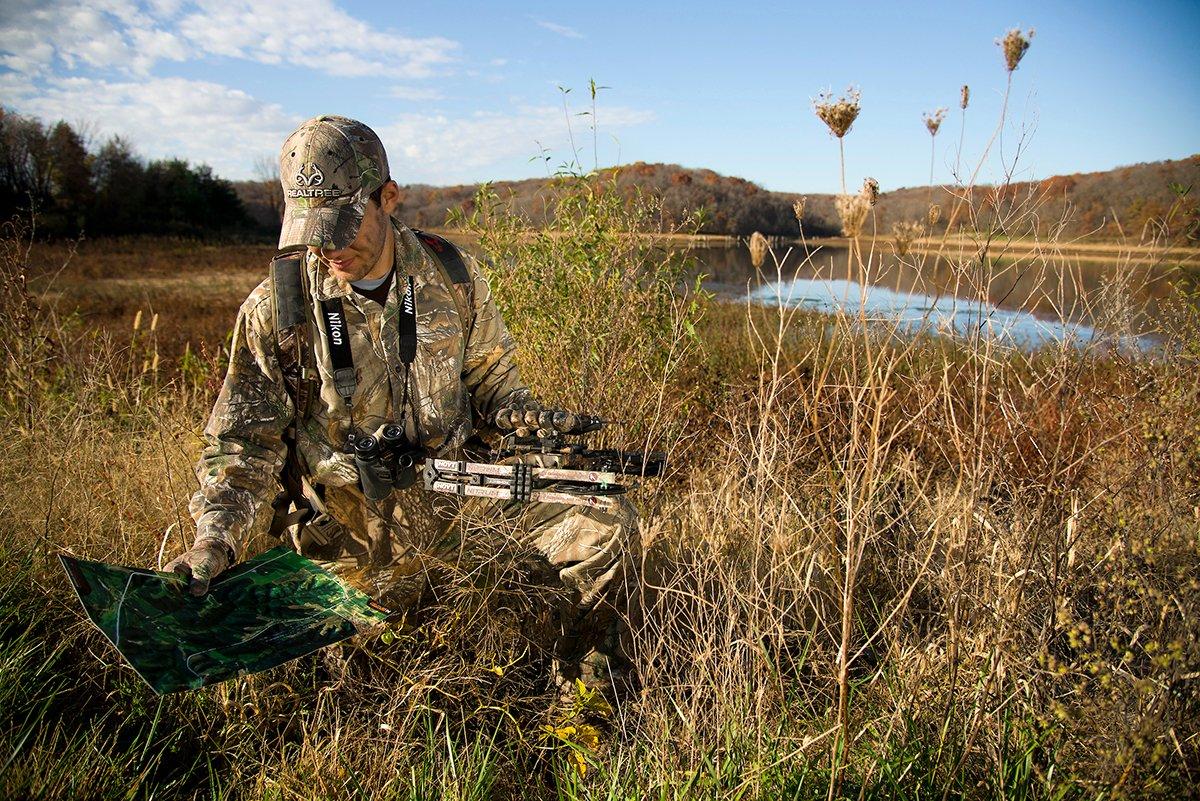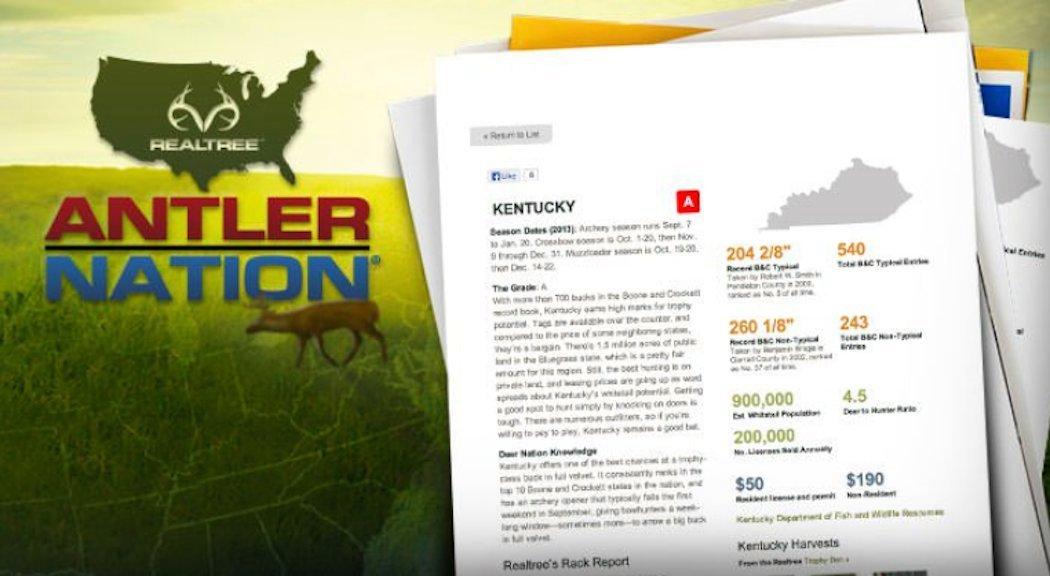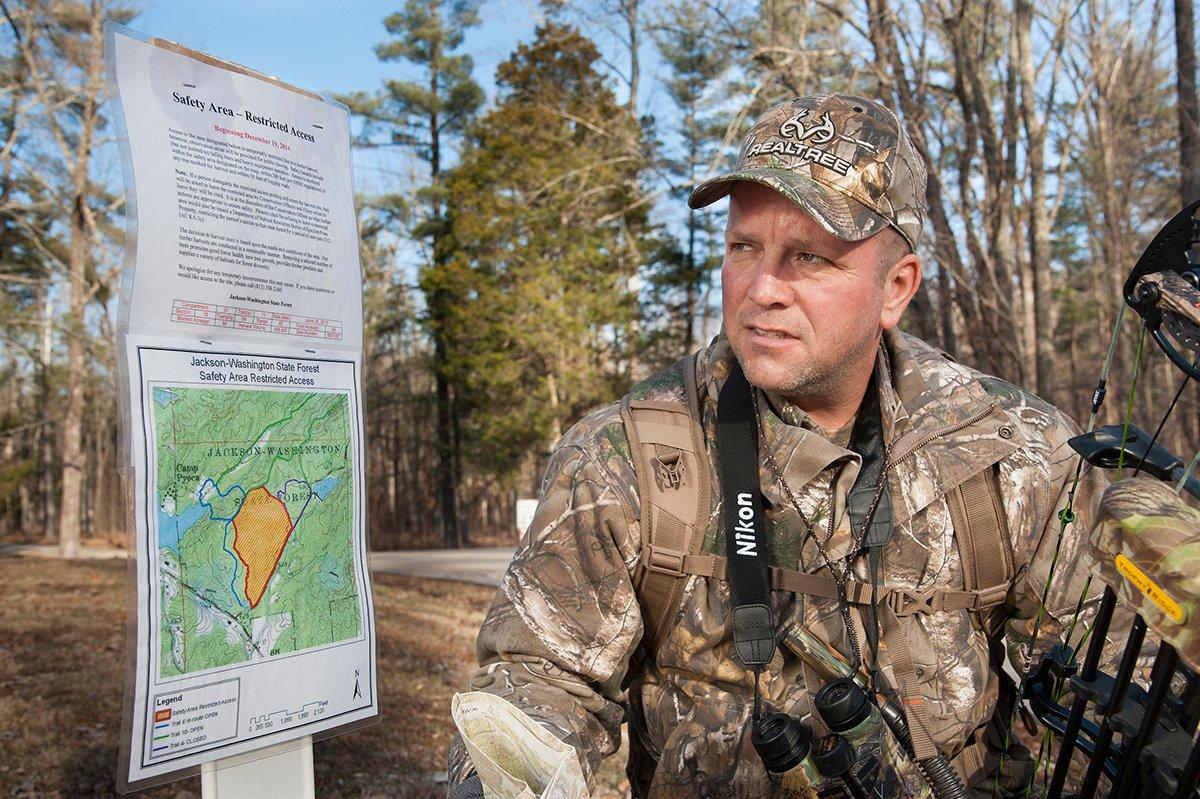Record Deer Data Shows the Hotbed Midwestern States Aren't the Whitetail Strongholds They Once Were
Deer hunting is about many things. And I assure you that while it isn't all about big deer, we would all love to set our sights on a truly incredible representation of the species. Most hunters who say otherwise aren't being entirely truthful with themselves.
More importantly, while quality deer management and trophy management are not the same thing, having a balanced age structure (and bigger bucks) does translate to a healthier deer herd. So again, it isn't just about big deer. It's about analyzing one of the biggest tell-tale signs that a state's deer population is thriving.
It's important to note that record bucks are rare — even under perfect conditions. It takes a lot to get them there. They need three things to achieve record status: age, nutrition and genetics (in that order); and they need a lot of each. Record-keeping systems, such as the Boone and Crockett Club's, help to retain important information on what states are succeeding at conservation and quality deer management, and which ones aren't.
Note: All data from Canadian provinces have been excluded for the sake of state-ranking purposes.
So, now for the data. We've long been told that certain southern and midwestern states — such as Texas and Illinois— are some of the best big buck states. Simply looking at the all-time best states for Boone and Crockett whitetails would suggest that, right? This is the list that's generally referenced by most outdoor media. It's the top states for total number of record typical and non-typical bucks produced.
Top 5 Typicals All-Time
1. 213 5/8 | SK | Hanson
2. 206 1/8 | WI | Jordan
3. 205 | MO | Gibson
4. 204 4/8 | IL | Johnson
5. 204 2/8 | KY | Smith
- Wisconsin: 1,770
- Illinois: 1,405
- Iowa: 1,291
- Minnesota: 1,168
- Kentucky: 1,009
- Ohio: 977
- Missouri: 851
- Kansas: 828
- Indiana: 739
- Texas: 731
- Nebraska: 349
- Michigan: 296
- Oklahoma: 249
- Arkansas: 247
- Georgia: 227
- South Dakota: 201
- Mississippi: 179
- Maine: 160
- Virginia: 158
- Montana: 153
So, I'll ask it again, the only states that crank out good numbers are the midwestern destinations, right? Let's look at the data a little differently. Here are the top states for total number of record typical and non-typical bucks produced within the last 10 years.
Top 5 Non-Typicals All-Time
1. 333 7/8 | MO | Picked Up
2. 328 2/8 | OH | Picked Up
3. 312 | TN | Tucker
4. 307 5/8 | IA | Lovstuen
5. 304 3/8 | IL | Bryant
- Wisconsin: 712
- Ohio: 457
- Kentucky: 418
- Indiana: 369
- Iowa: 354
- Illinois: 331
- Kansas: 322
- Missouri: 301
- Minnesota: 293
- Texas: 248
- Nebraska: 106
- Oklahoma: 94
- Arkansas: 85
- Michigan: 80
- Mississippi: 69
- South Dakota: 67
- Pennsylvania: 56
- Virginia: 46
- Georgia: 44
- North Dakota: 39
Things changed a little with this list, but not a lot.
Honestly, neither of those lists paint an accurate picture. The reason the midwestern states have long been heralded as the kings of deer hunting is in part due to their total land mass. Plus, the cat has long been out of the bag that key midwestern states produce giants. People have been flocking to said states for more than two decades now and that (and other things) have taken their toll on the deer herd.
So, now for more reliable data that actually shows you something worth looking at outside of purely historical, nostalgic data.
All data henceforth is based on records for total entries per square mile of total land mass within the last 10 years.
Analyzing the data in this manner takes away the square-mile advantage that many bigger states — such as Texas — have over smaller states. Simply gauging how many Boone and Crockett deer a state has pumped out doesn't provide an accurate snapshot of which states are truly the best for killing a Boone and Crockett buck. The lists above will not look like the lists below.
Here is the data that you need.
Don't Miss: The Greats: Top Record Book Whitetails by Crazy Categories
Top Overall States for Boone and Crockett Whitetails Per Square Mile Since 2008
Things change a lot when you look at each state on a level playing field. They change even more when you just look at the most recent data (within the last decade). Here are the top overall states for Boone and Crockett bucks for total entries per square mile of land mass within the last 10 years.
- Wisconsin | 712 total entries | 0.01310 entries
- Ohio | 457 total entries | 0.01116 entries
- Kentucky | 418 total entries | 0.01052 entries
- Indiana | 368 total entries | 0.01026 entries
- Iowa | 354 total entries | 0.00633 entries
- Illinois | 331 total entries | 0.00595 entries
- Missouri | 301 total entries | 0.00436 entries
- Kansas | 322 total entries | 0.00393 entries
- Minnesota |293 total entries | 0.00368 entries
- Delaware| 6 total entries | 0.00307 entries
- Maryland | 27 total entries | 0.00276 entries
- Arkansas | 84 total entries | 0.00161 entries
- Mississippi| 69 total entries | 0.00147 entries
- Connecticut | 7 total entries | 0.00144 entries
- Michigan | 80 total entries | 0.00140 entries
- Nebraska | 106 total entries | 0.00137 entries
- Oklahoma | 94 total entries | 0.00136 entries
- Pennsylvania | 56 total entries | 0.00124 entries
- West Virginia | 29 total entries | 0.00120 entries
- Virginia | 46 total entries | 0.00116 entries
As shown above, comparing total entries to entries per square mile of land mass tells two completely different stories — especially outside of the top five. My takeaway from this — don't overlook certain northeastern and southeastern states. Furthermore, Ohio, Kentucky and Indiana are the new kids on the block. That's the new golden triangle for big white-tailed bucks. Illinois, Iowa and Wisconsin no longer hold that title like they did 10 to 20 years ago. And when you think about it — that's a pretty eye-opening fact.
Also, interestingly enough, famous whitetail states such as Texas, South Dakota, Montana and most recently Tennessee, didn't even make the top 20 list when looking at every state on a level per-square-mile playing field. Furthermore, eastern states such as Delaware (No. 10), Maryland (No. 11), Connecticut (No. 14) and Pennsylvania (No. 18) did make the top 20 — something they don't do on the traditional all-time lists commonly referred to.
Don't Miss: Where the Biggest Booner Bucks Are Coming from Now
Top Overall States for Typical Whitetails Per Square Mile Since 2008
Some folks really get worked up over big typical whitetails. They are truly special after all. It takes a lot for a typical whitetail to reach B&C status. There's even some data to suggest that big typicals aren't as common as they once were. Instead, it seems non-typical genetics have become much more prevalent within the last 20 to 30 years. One can only speculate as to why that's happened. But that's a discussion for another day.
The Largest Typical Whitetail Ever Killed By a Hunter
Here are the top overall states for typical Boone and Crockett bucks for total entries per square mile of land mass within the last 10 years.
- Wisconsin | 526 total entries | 0.009685 entries
- Kentucky | 283 total entries | 0.007123 entries
- Indiana | 233 total entries | 0.006496 entries
- Ohio | 259 total entries | 0.006325 entries
- Iowa | 184 total entries | 0.003293 entries
- Illinois | 160 total entries | 0.002878 entries
- Minnesota | 193 total entries | 0.002424 entries
- Missouri | 154 total entries | 0.002235 entries
- Maryland | 18 total entries | 0.001841 entries
- Kansas | 150 total entries | 0.001833 entries
- Connecticut | 7 total entries | 0.001444 entries
- Arkansas | 57 total entries | 0.001094 entries
- Delaware | 2 total entries | 0.001023 entries
- Michigan | 58 total entries | 0.001021 entries
- Mississippi | 47 total entries | 0.001001 entries
- Rhode Island | 1 total entries | 0.000956 entries
- Pennsylvania | 41 total entries | 0.000914 entries
- West Virginia | 22 total entries | 0.000913 entries
- Nebraska | 63 total entries | 0.000819 entries
- Virginia | 32 total entries | 0.000808 entries
The top 10 for typical bucks looks as you would expect it to. But there are a few noteworthy things. Ohio drops down a few spots, confirming that it's more of a non-typical-producing state. But bigger than that is the fact that Rhode Island (No. 16) climbs into the top 20 — which it does not do when factoring in non-typical records. Also, Oklahoma falls completely out of the top 20, Nebraska drops from No. 16 to 19, and Kansas falls from No. 8 to 10 when you take away the non-typical factor, which reaffirms that the Texas-Oklahoma-Kansas-Nebraska corridor is a hotbed for big non-typicals — not so much big typicals.
Don't Miss: Are the Biggest Typical Whitetails History?
Top Overall States for Non-Typical Whitetails Per Square Mile Since 2008
Other deer hunters really love a big, nasty-looking buck with stickers, kickers and drop tines going every which way. If that's your thing, and killing one is your goal, these are the 20 states you need to look at hunting.
The Largest Non-Typical Whitetail Ever Killed By a Hunter
Here are the top overall states for non-typical Boone and Crockett bucks for total entries per square mile of land mass within the last 10 years.
- Ohio | 198 total entries | 0.004835 entries
- Indiana | 135 total entries | 0.003763 entries
- Wisconsin | 186 total entries | 0.003424 entries
- Kentucky | 135 total entries | 0.003398 entries
- Illinois | 171 total entries | 0.003076 entries
- Iowa | 170 total entries | 0.003042 entries
- Missouri | 147 total entries | 0.002133 entries
- Kansas | 172 total entries | 0.002102 entries
- Delaware | 4 total entries | 0.002047 entries
- Minnesota | 100 total entries | 0.001256 entries
- Maryland | 9 total entries | 0.000920 entries
- Oklahoma | 59 total entries | 0.000859 entries
- Nebraska | 43 total entries | 0.000559 entries
- Arkansas | 27 total entries | 0.000518 entries
- Mississippi | 22 total entries | 0.000469 entries
- Michigan | 22 total entries | 0.000387 entries
- Virginia | 14 total entries | 0.000353 entries
- South Dakota | 26 total entries | 0.000342 entries
- Texas | 88 total entries | 0.000336 entries
- Pennsylvania | 15 total entries | 0.000334 entries
Looking at this list, several things are apparent. Ohio and Indiana jump to the top when only considering non-typicals. Texas finally makes it onto a top-20 list without using its size advantage. South Dakota does the same. And neither Connecticut nor Rhode Island has produced a single non-typical Booner in the last 10 years, despite ranking No. 11 and 16 (respectively) on the typicals per square mile of land mass list since 2008. Also, Connecticut ranks No. 14 for Boone and Crockett bucks for total entries per square mile of land mass within the last 10 years — without a single non-typical to show for it. All interesting points to consider.
Don't Miss: Top 5 Typical Bucks from the Southeast | Top 5 Non-Typical Bucks from the Southeast
Top States for Boone and Crockett Bucks Per Square Mile Since 2008 by Region
Most hunters either can't or choose not to travel all over the country in pursuit of whitetails. That said, many do hunt within a given region. Here we break down the top states for Boone and Crockett bucks per square mile of land mass since 2008 by region.
Northeast: Most people think of Maine, New York and Pennsylvania when big northeastern bucks are the discussion topic. But the data shows that Delaware, Maryland and Connecticut are actually the go-to states if you want a chance at killing a stud.
- Delaware | 6 total entries | 0.003070 entries
- Maryland | 27 total entries | 0.002762 entries
- Connecticut | 7 total entries | 0.001444 entries
- Pennsylvania | 56 total entries | 0.001249 entries
- Rhode Island | 1 total entries | 0.000956 entries
Learn More: Antler Nation
This resource sheds light on season dates, license costs, trophy buck potential, little-known knowledge about specific locations, and much more.
Southeast: A lot of people refer to Kentucky as a midwestern state. But it's actually a southeastern one. It blows the rest of the region away in terms of record-book bucks, though.
- Kentucky | 418 total entries | 0.010521 entries
- Arkansas | 84 total entries | 0.001613 entries
- Mississippi | 69 total entries | 0.001470 entries
- West Virginia | 29 total entries | 0.001204 entries
- Virginia | 46 total entries | 0.001161 entries
Midwest: Wisconsin is king. But Ohio and Indiana are the real headliners here. Things have certainly changed within the last decade.
- Wisconsin | 712 total entries | 0.013109 entries
- Ohio | 457 total entries | 0.011160 entries
- Indiana | 368 total entries | 0.010260 entries
- Iowa | 354 total entries | 0. 006336 entries
- Illinois | 331 total entries | 0.005954 entries
West: Montana has always dominated the headlines for big whitetails. And for Pope-and-Young-class deer, rightfully so. But it's a little overrated when it comes to true giants. Even the likes of Idaho and Washington have higher odds of crossing paths with one.
- Texas | 248 total entries | 0.000947 entries
- Colorado | 19 total entries | 0.000183 entries
- Idaho | 9 total entries | 0.000108 entries
- Washington | 7 total entries | 0.000105 entries
- Montana | 11 total entries | 0.000075 entries
Don't Miss: Top 5 Typical Bucks from the Northeast | Top 5 Non-Typical Bucks from the Northeast
Top Overall States for Typical Whitetails Per Square Mile Since 2008 by Region
A big, symmetrical rack is a thing of beauty. Here we break down the top states for typical Boone and Crockett bucks per square mile of land mass since 2008 by region.
Northeast: It looks like Maryland and Connecticut are the best destinations in this region. It makes you wonder why Pennsylvania and New York get all of the press.
- Maryland | 18 total entries | 0.001841 entries
- Connecticut | 7 total entries | 0.001444 entries
- Delaware | 2 total entries | 0.001023 entries
- Rhode Island | 1 total entries | 0.000956 entries
- Pennsylvania | 41 total entries | 0.000914 entries
Top 5 Typical Whitetails in the Last 10 Years
1. 199 4/8 | MO | Duncan
2. 198 6/8 | SK | De Villers
3. 198 6/8 | MB | Picked Up
4. 198 2/8 | NE | Petrzilka
5. 195 2/8 | AR | Ayecock
Southeast: The order of this list looks identical to the previous southeast region list. The northern- and western-most states within this region are the top producers.
- Kentucky | 283 total entries | 0.007123 entries
- Arkansas | 57 total entries | 0.001094 entries
- Mississippi | 47 total entries | 0.001001 entries
- West Virginia | 22 total entries | 0.000913 entries
- Virginia | 32 total entries | 0.000808 entries
Midwest: Much the same as the overall list for the Midwest. Illinois, once the talk of the country, barely makes the top five.
- Wisconsin | 526 total entries | 0.009685 entries
- Indiana | 233 total entries | 0.006496 entries
- Ohio | 259 total entries | 0.006325 entries
- Iowa | 184 total entries | 0.003293 entries
- Illinois | 160 total entries | 0.002878 entries
West: Montana climbs a little higher when just looking at typicals. But Colorado is the real winner here. Who would expect it to rank so well? Isn't that just an elk state?
- Texas | 160 total entries | 0.000611 entries
- Colorado | 14 total entries | 0.000134 entries
- Idaho | 6 total entries | 0.000072 entries
- Montana | 8 total entries | 0.000054 entries
- Washington | 3 total entries | 0.000045 entries
Don't Miss: Top 5 Typical Bucks from the West | Top 5 Non-Typical Bucks from the West
Top Overall States for Non-Typical Whitetails Per Square Mile Since 2008 by Region
There's nothing quite as adrenaline-driving as a moose-like whitetail rack swaying through the timber. Here we break down the top states for non-typical Boone and Crockett bucks per square mile of land mass since 2008 by region.
Northeast: Both New Jersey and New York finally make it onto a list. That's certainly more of a win for the former, though. And quite shocking in regard to the latter. New York isn't the big-buck state people like to think it is.
- Delaware | 4 total entries | 0.002047 entries
- Maryland | 9 total entries | 0.000920 entries
- Pennsylvania | 15 total entries | 0.000334 entries
- New Jersey | 2 total entries | 0.000269 entries
- New York | 7 total entries | 0.000148 entries
Top 5 Non-Typical Whitetails in the Last 10 Years
1. 312 | TN | Tucker
2. 303 7/8 | IN | Beck
3. 295 | KS | Picked Up
4. 293 3/8 | IA | Forret
5. 284 | NE | O'Brien
Southeast: And the southeast region almost goes three for three in keeping the same order. The only difference? Virginia and West Virginia trade places in the non-typical category. Most notably, though, is that Tennessee (the home of the largest hunter-harvested non-typical) doesn't make the list.
- Kentucky | 135 total entries | 0.003398 entries
- Arkansas | 27 total entries | 0.000518 entries
- Mississippi | 22 total entries | 0.000469 entries
- Virginia | 14 total entries | 0.000353 entries
- West Virginia | 7 total entries | 0.000290 entries
Midwest: What's most shocking about this is that Iowa drops down to No. 5. Even Illinois has produced more Booners of late.
- Ohio | 198 total entries | 0.004835 entries
- Indiana | 135 total entries | 0.003763 entries
- Wisconsin | 186 total entries | 0.003424 entries
- Illinois | 171 total entries | 0.003076 entries
- Iowa | 170 total entries | 0.003042 entries
West: Texas is still miles ahead of the other western states. But you have to love that Washington climbs all the way up the ladder to be No. 2 in the West for the most non-typical bucks per square mile of land mass in the last 10 years.
- Texas | 88 total entries | 0.000336 entries
- Washington | 4 total entries | 0.000060 entries
- Colorado | 5 total entries | 0.000048 entries
- Idaho | 3 total entries | 0.000036 entries
- Montana | 3 total entries | 0.000020 entries
Don't Miss: Top 5 Typical Bucks from the Midwest | Top 5 Non-Typical Bucks from the Midwest
Conclusion
Data is a wonderful thing. It provides clarity in a world full of foggy confusion. It sheds light where there previously was none. And it dispels fallacies that people have believed for years.
While none of this information will directly help you kill a deer, it does tell a story. It tells a story of conservation. It shows how the landscape is changing for deer and deer hunters. It hints at what the future of big whitetails might look like in the decades to come.
Big deer are captivating.
Big deer are rare.
But at least now you have accurate and applicable data in hand to help you decide where you'll spend your time chasing your dream buck.
Are you a deer hunter wanting to learn how to accomplish your goals? Check out our stories, videos and hard-hitting how-to's on deer hunting.










